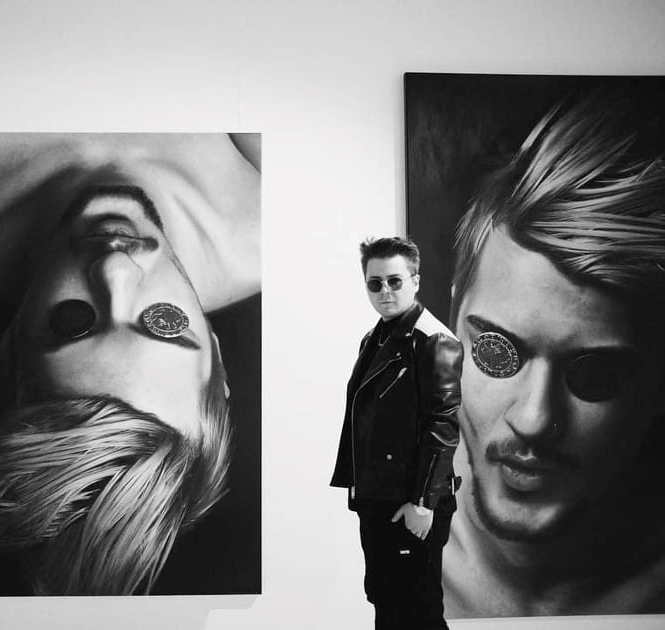Richard Marco

Exhibition Revenant
Works of art, unlike humans, can survive for millennia. They may become incomprehensible to future generations when the context of their creation passes away, but their physical form is destined to be preserved in temples, cabinets of curiosities, or museums because of their value (whether tangible or spiritual). Yet, like us, they are threatened by accidents, catastrophes, wars. Our local and global art histories are composed of works of art that have managed to “live” to see an audiovisual record or a written reference of them. Many thus become ghosts after their physical destruction, surviving in other media, others disappear without a trace, and we can only speculate how alternative art history discourses would have evolved if they had been known.
Richard Marco’s latest solo exhibition continues his preoccupation with the theme of transience and mortality. The focus of the exhibition, entitled Revenant, is the eponymous series of his latest works, in which he links the typically human aspect more strongly with the realm of art, and asks the question whether the destroyed image is lost for good. Richard Marco purposely chooses paintings whose original version have disappeared and takes the opportunity to evoke them from photographic records in the form of re-painting. They are not copies, as the artist modifies the model in technique, color and scale, due to the many missing characteristics that the photographs do not provide. The tiny gouache is therefore brought to the large-scale canvas, changing the very structure of the strokes and the resulting appearance.
The fatality of transience is painfully recalled in this attempt. The desire to restore something once destroyed is strong but unrealistic. Reconstruction is therefore doomed to interpretation beforehand. The resurrection of lost art works from its imprints gives rise to paintings that are and are not identical to the original version. They are revenants who have returned from the realm of the dead fundamentally changed.
Marco builds his paintings from layers of paint, which he disrupts with a solvent mixture. This art technique, which he began experimenting with in 2020 in the form of final treatment of his paintings, gives their realistic subject matter expressive “punches.” The development of this technique has prompted the artist to construct a pictorial surface directly on its basis, while the actual result is often decided by chance. Ultimately, it also contributes to a certain blurriness and illegibility that is intrinsically related to the ambiguity of the mediated traces left by the actual artwork, be they photographs, studies or descriptions.
In terms of content, the works chosen for this resurrection are also as if fatefully linked to the theme of vanitas. In the spirit of the Romantic preoccupation with the past, the ruins of the ruined abbey were thematized in relation to the natural laws of the inevitable course towards extinction in the metaphor of winter. The island of death was a direct reference to the ancient mythological symbolism of death and wandering into the underworld. Similarly, the Port of Greifswald works with the subtle metaphor of a voyage and its termination in a final destination where the sails are lowered and peace and tranquility prevail.
A dialogue about the fragility not only of ourselves, but also of that which transcends us, complements the artist’s earlier series Et in Europa Ego. This pair of photorealistic paintings speaks about the end of grand empires and kingdoms that have been built with the immodest intention of lasting for many generations. They live so long in the collective memory that they seem immortal. Their fall is thus first a catastrophe and later a distant echo or a mention in a textbook, like those of Rome or Carthage. These state entities are symbolized by coins, which are placed on the eyes of contemporary people in a stylized ancient funerary ritual.
Jana Babušiaková
